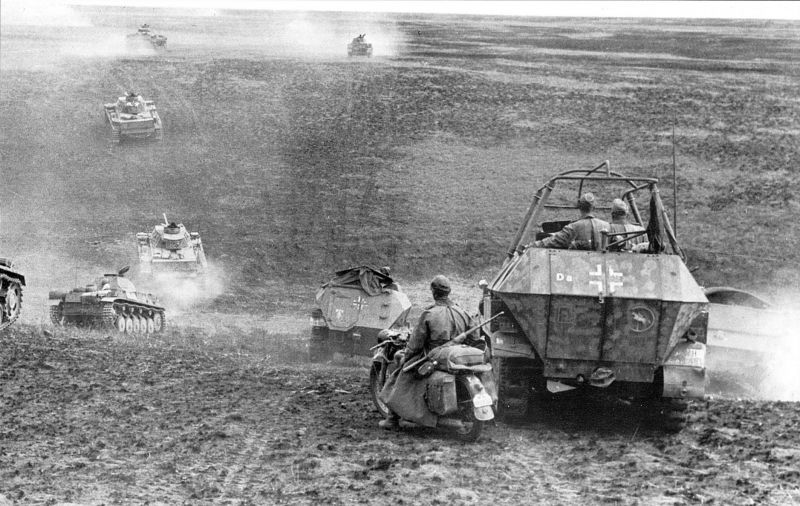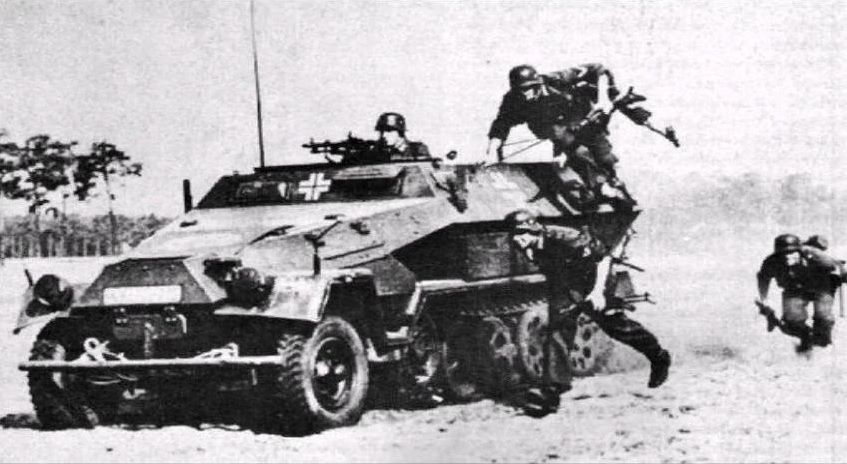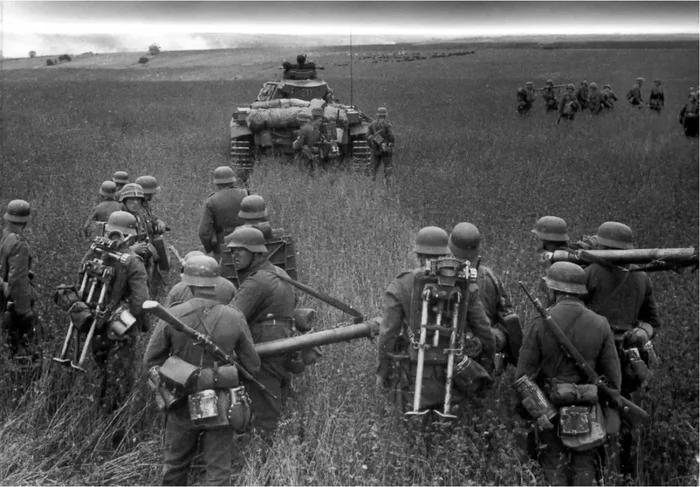HexCode wrote: ↑2021-07-13 23:31, Tuesday
Given PGF's weaponry differentiation capabilities, breaking down historically reflective divisions into constituent battalions / companies is the logical way to proceed experimenting.

Yes. SSI made the games in battalion-division scale, setting the parameters to their scale pretty well.
But automatically dragging units with the same parameters to company-battalion scale looks... well, very unreasonable, to say the least.
The unit parameters have two problems:
1) Parameters within a class. The problem was more or less solved in the past and is solved now.
2) Matching individual class parameters to interclass interactions. "Class struggle", but in this case without "Capital" from one bearded struggle's classicist.

At this point I see that the class struggle of the units does not correspond to the actual reality of the fronts. Read more below.
HexCode wrote: ↑2021-07-13 23:31, Tuesday
Choosing a battlefield
somewhere along the Eastern Front also makes a lot of sense.

Terrain, unit Entrenchment Levels and Weather conditions may impact the battlefield goings on, especially time-wise. Thinking, perhaps, of Soviet Ukraine in the summer may render the experimentation "bare bones".

I forgot to write that Terrain Clear, no roads.
So, yes, the first exercise was on level steppe.
HexCode wrote: ↑2021-07-13 23:31, Tuesday
Ignoring PGF's AI Module is the way to go here. Given the experimentation's explicit aims, play-testing under an AHS play mode is highly desirable.

Yes. AI introduces an element of chaos into the system. This element of chaos can be taken into account - but only later, when the system is already configured.
HexCode wrote: ↑2021-07-13 23:31, Tuesday
Lettos wrote: ↑2021-07-13 20:29, TuesdayTroops are lined up in two or three "long" lines like the battles of Antiquity.
That's also fine; provided the infantry division constituent units are prepositioned in a logically defensive manner as per PGF's play system. Similarly, the tank division constituent units should be prepositioned in a logically offensive manner as per PGF's play system.

It looked like this

HexCode wrote: ↑2021-07-13 23:31, Tuesday
Lettos wrote: ↑2021-07-13 20:29, TuesdayNo unit reinforcements
Are "we" talking nixing the procurement of brand new units here ? Are "we" also talking nixing the replacement of lost unit Strength Factors as well ?
There is no purchase of new units, and you cannot use Replacements.
HexCode wrote: ↑2021-07-13 23:31, Tuesday
By the way, what sort of prestige grants does the experimentation entail ?
EXP is also an element of controlled chaos. That's why I've used EXP=0 for now.
Based on yesterday's observations, I have some more preliminary conclusions:
(Opposing sides: "AX" vs "AL")
The task in reality would look like this:
AX must strike one or two AL infantry units with artillery in a narrow frontal area, preferably in the center of a vertical line. Destroy these infantry units and hit the ATY with tanks. Take the tanks to the rear of the AL line and quickly attack the ATY units of the AL with tanks from the rear, moving the tanks up and down from the front break place.
The AL must react quickly to the tank breakout and cover the ATY from the tanks with infantry and ATG units. It is possible that in doing so also counter-attack ATY units AX.
In the exercise the ALs did the job, but the AXs did not.
In my opinion, the main reason for this is the disproportionately high Ground Defense of infantry and ATG units that don't have ENT.
AL quickly move INF units back and cover ATY from the rear. So it turns out that the INFs leave their trenches, run back out into the flat steppe, and still be able to defend!
That the AL has time to move the ATG. I'll even say - ATGs should move faster, especially if we use the scale of 1 hex = 1km.
But the abnormal thing is that the ATG is also taken to the flat steppe, and thanks to the inflated parameter Ground Defense can withstand tanks!
If the terrain is more complex, AX has no chance at all.
If I move the positions of the AL regiments (groups of 3 battalions each) in a line without gaps, it will be incredibly difficult for AX to break through the line. There is no way to go around the line from below or above, because it would require 3-4 turns with the existing MA parameter for tanks. And in 3-4 turns the AL will have time to prepare an anti-tank barrier from below to above.
In reality, the ATY AX would quickly advance to fire range, as close to the front line as possible, and make artillery preparations on INF and ATG. Then the infantry would attack and knock out the remaining enemy ATGs. Only then would tanks rush into the breach.
It is difficult to implement such clever actions of the attacking side.
The problem is the ATY units. They need to be able to fire either before or after movement, and still have Indirect Fire capabilities.
Again, the game now features a slightly distorted, but still realistic, model of pre-WW2 combat, as imagined by French, British, American, Soviet, and Polish generals.
Tanks approach enemy infantry. They stand and provide a "wall". Artillery follows the tanks and is positioned to strike on the next turn. The infantry is there as well.
On the next turn, the artillery strikes. But then the artillery has nowhere to go because the tanks and infantry have not yet had time to break through the defense. The artillery waits another turn before catching up with the tanks, which have built a new solid wall near the next enemy positions.
If you use a Dual-purpose unit and forgo the usual trucks, the problem is solved simply. Motorized ATY unit with MA=5-6 + Organic Transport with same parameters. Ranged fire capability in both modes.
The artillery of the armored division of the Wehrmacht is an offensive weapon. ATG - too. AD guns - too!
This is Guderian and his concept. By 1943-44, having learned from their defeats, this concept had been understood and learned to be applied by all the armies at war.

















